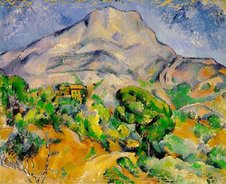Science/animal health/environment
Here we go again: Ministry scientists in their biohazard suits, spraying disinfectant. EU bans on cattle movement.
We know what to expect: dire warnings about the loss of the UK's beef and dairy exports, ruinously high compensation payments to farmers, more of those TV images of funeral pyres of cattle, a repeat
performance of 2001. Fasten your seatbelts, UK taxpayer, we have flown into an area of turbulence, yet again.
And why ? All because that microscopic virus , an incomplete organism we are told, with no independent existence, except as a parasite, has returned to the UK, quite how no one is sure.
Perhaps it was on the wind, or on vehicles returning from abroad, or feet. Perhaps it was a re-activation of latent virus, lying dormant since the last outbreak. Or maybe you are open to conspiracy theories, in which case it was bio-terrorism. Thinks: who doesn't like us ? No, that would take too long...
Irrespective of how it gets here, once it's in, it is devilishly difficult to control, more so, it would seem, that in neighbouring EU countries such as Eire, Denmark, the Netherlands etc. Now why is that, one asks ?
We all learn at school how we raise our cattle in the western half of the country, with higher rainfall, a damper climate with lush pastures, preferring to keep the drier eastern half of the country for growing crops, such as wheat, sugar beet, legumes etc.
What that means is that once the virus gets in, by whatever means, and infects a single animal, it then has near ideal conditions in which to transmit infections , not necessarily by direct animal-to- animal contact, as Ministry officials hopefully surmise, but simply by blowing on the wind, especially at dawn when those mists lie over those fields in the valleys.
Now consider the devastating effect on our economics. The UK is supposed in theory to be a free-enterprise nation, or so we are told. Anyone is free to buy some land and a herd of cattle, for milk or beef, and pocket a few EU grants in the process.
If it's a good year, then you bank your profits, and pay the same graduated taxes as your neighbour, who runs a filling station, or a sweet shop in the village, without benefit of subsidies.
If your animals infected, through no negligence of your own ( or you are Bernard Matthews, in which case the rules are waived), then you are deemed a victim of events beyond your control, and if your animals have to be slaughtered, then you can put in a claim for compensation that is based on the market value of your animals, prior to their being infected. After a period of upset and inconvenience, you have a substantial cash sum in the bank that allows you to start over again. You have not paid a single penny towards an insurance policy, so who has picked up the tab ? Answer: central government, in the first instance, and we the taxpayer in reality, whether we like it or not. No one bothers to consult, needless to say.
Free enterprise economy ? It is nothing of the sort. Our system is essentially a soft-centred form of Stalinism, which allows farmers to make hay while the sun shines, then rushes to protect them at the first drop of rain, waving blank cheques from the taxpayer. You might like to remember that next time the speeding de-luxe 4x4 careers round the bend on the single lane road, forcing you into the rough at the side.
Why are we, the taxpayer, so obliging, so understanding, so complacent, passive and indifferent, seeing as how we are the victims of a State-sanctioned con-trick that make us the insurer of last resort, with no cut of the profits in the good years ?
Clearly, it has a lot to do with the curious rôle the Chancellor plays in that unwritten UK constitution., someone who is appointed by the PM, not the electorate. But then, we do not appoint the PM directly either. No 2's task is to look after the finances, veto expensive proposals, over-rule PMs even, yet who is given a green light to play Father Christmas on the pretext of protecting industries, livelihoods, jobs, and, oh yes, that rural vote.
But enough of the politics. Can anything be more depressing thatn watching the way UK Chancellors misspend and squander billions of taxpayers' money, pouring it into blackholes where it disappears without trace. Meanwhile the infrastructure: the roads, railways, airports, water, and other utilities, high streets, schools, hospitals, deteriorate year on year, and one thinks how much better things could be if cash were properly channneled where it's really needed.
A slight change of focus now: you may be wondering why I chose the particular above of the car caked in dust. Yes, it was almost certainly Sahara dust that settled on them with a few drops of summer rain: the picture could have been taken in the UK, but was in fact taken on the outskirts of Pisa on our recent trip to Italy.
I had taken it, intending to add it to an archive of photos to accompany a new theme on this blog, started recently, on innovative technology that might be brought to bear that could make the world's deserts green, especially the Sahara.
At the risk of seeming to go off at a tangent, I would mention that I did a post recently on that vast untapped planetary resource, the Sahara desert, blessed with an abundance of solar energy, but lacking an essential ingedient, namely water, that leaves it essentially unpopulated. But is the desert sand potentially fertile, if modern technology could supply it with water (eg by piping electrolytic hydrogen from the coast, and combusting it to pure water inland) ?

Amazingly, much of Sahara dust comes from one small area - the Bodélé depression, marked with a red circle. It's the remains of a dried-up lake, where the lie of the land causes winds to funnel though a gap at high speed, stirring up vast clouds of dust. Their path across Africa and the Atlantic has been tracked by satellite imagery.
Update Monday 8th Aug. "Has the Government handled the foot-and-mouth crisis effectively?" is the title of today's "Your View" in the Telegraph, to which I've just submitted the following:
"What may have saved the day on this occasion ( we hope) is the boring old science, which the public and media take for granted. I refer to the speedy identification of the F&M viral strain as an unusual one not seen in the UK since the 60s, and the equally quick realization that this strain was presently being used for vaccine production.
Of course the nearby Institute of Animal Health IS ramshackle and run down. Such is the fate of most publicly-funded research institutes that do the patient, painstaking, research needed to keep tabs on each new variant of human and animal infectious disease.
In America, it is poorly maintained bridges that collapse. In Britain, it's our science and technology infrastructure that is neglected. Both suffer for the same reason: they are seen as unsexy, and drip-fed just sufficient funds to maintain an appearance of responsibility.
Note the way our research institute directors are hauled in front of the cameras on a Sunday when something goes wrong. What kind of recognition do they get when things don't go wrong ? Answer: only jealousy and sniping at their public service pensions for a lifetime of unglamorous attention to detail, and virtual anonymity - not even a modest OBE or even MBE- but that's provided, of course, nothing goes wrong on their watch."









No comments:
Post a Comment